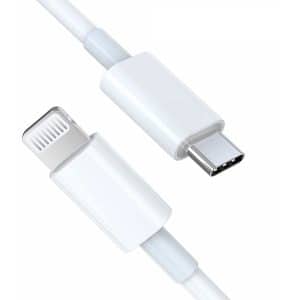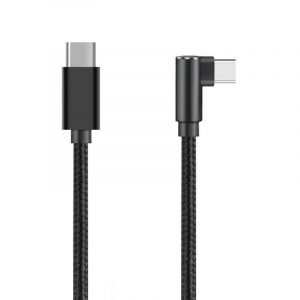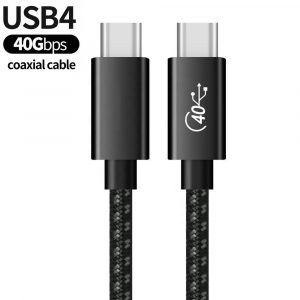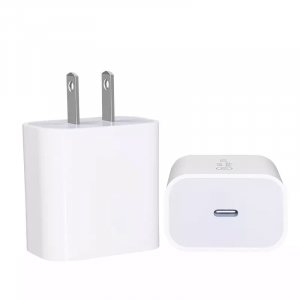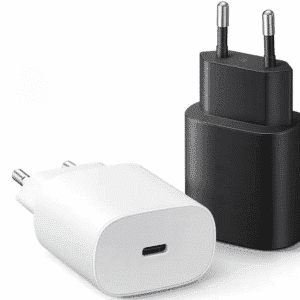The evolution of USB Power Delivery (PD) standards has been instrumental in advancing the charging capabilities of electronic devices. With each iteration, we’ve seen significant improvements in power efficiency and functionality. Let’s delve into the differences between USB PD 3.1, PD 3.0, and PD 2.0.
What is USB Power Delivery (PD)?
USB Power Delivery is a charging protocol that utilizes USB Type-C cables and connectors to deliver higher levels of power to connected devices. It is a universal charging standard that allows for faster charging and power delivery over USB connections.
It enables devices to negotiate power delivery up to 240W, facilitating faster charging times and powering a broader range of devices such as laptops, smartphones, tablets, and more.
This technology enables faster charging, more power for larger devices, shorter total charge times, and the ability to charge multiple devices simultaneously.
Ever wonder why some USB-C cables charge your devices quicker than others? It’s all about USB Power Delivery (PD)! While the sleek, oblong USB-C connector is the physical port, USB PD acts as the communication language behind the scenes. It dictates how much power gets delivered through that cable, enabling faster charging for your devices.
Not all USB-C cables are created equal. To unlock the full potential of fast charging, ensure you’re using a USB-C to USB-C cable that supports the specific USB PD standard your device requires.
USB PD 2.0: A Revolution in Fast Charging (Introduced in 2014)
Introduced in 2014, USB Power Delivery 2.0 (USB PD 2.0) marked a turning point in the world of charging. This innovation enabled up to 100W of power delivery through a single USB-C cable. This leap forward transformed charging capabilities, extending them beyond smartphones to encompass even laptops and tablets. The USB-C to USB-C cable emerged as the universal solution for both power delivery and data transfer, streamlining the user experience.
USB PD 3.0: Enhanced Power Management and Efficiency (2015 Release)
The year 2015 saw the arrival of USB Power Delivery 3.0 (USB PD 3.0), bringing a wave of improvements. This upgrade focused on optimizing the charging experience with features like:
- Enhanced Power Management Protocols: USB PD 3.0 introduced refined protocols for better power management, leading to more efficient charging.
- Programmable Power Supply (PPS): This innovative feature allows devices to negotiate the exact power requirements, resulting in faster and more optimized charging cycles.
- Improved Cable Plug Identification: USB PD 3.0 ensured better cable compatibility and plug identification, further streamlining the charging process.
Impact on USB-C Accessory Production:
The introduction of USB PD 3.0 presented both challenges and opportunities for USB-C adapter factories.
- Challenge: Manufacturers needed to adapt their production processes to create accessories that could handle the more complex power negotiation protocols of USB PD 3.0.
- Opportunity: The new standard opened doors for the development of USB-C chargers and adapters capable of delivering higher power and ensuring compatibility with the growing number of USB PD 3.0 devices.
USB PD 3.1: Supercharge Your Devices with Up to 240W (Introduced in 2021)
Calling all power users! Get ready for a charging revolution with the arrival of USB Power Delivery 3.1 (USB PD 3.1), unveiled in 2021. This cutting-edge standard is a game-changer for devices with high power demands, especially high-performance gaming laptops.
Unleash the Power:
The most significant upgrade in USB PD 3.1 lies in its ability to deliver a staggering 240W of power. This is achieved through the use of higher voltage levels (28V, 36V, and even 48V) while maintaining the same 5A current rating.
Important Note: To tap into this extraordinary power delivery potential, you’ll need to use specifically designed USB-C cables that can handle these higher wattages. Standard cables won’t be sufficient.

Choosing the Right USB PD Standard for Your Needs
With the different USB PD versions available, selecting the right one for your devices can be confusing. Here’s a quick guide to help you decide:
- Most Smartphones and Everyday Laptops: If you primarily charge smartphones and laptops with moderate power demands, USB PD 2.0 or 3.0 (up to 100W) will provide sufficient fast charging.
- Future-Proofing and High-Performance Laptops: For power-hungry devices like high-performance gaming laptops and to ensure compatibility with future advancements, USB PD 3.1 with its 240W capability is the ideal choice. Remember: Utilize compatible high-wattage USB-C cables to unlock the full potential of PD 3.1.
The Evolving Landscape of USB-C Chargers and Adapters
The continuous innovation in USB PD technology significantly impacts the industry. Here’s how:
- USB-C Adapter Factories: Manufacturers are actively developing more advanced adapters that seamlessly integrate with the latest PD 3.1 standard.
- USB-C Charger Manufacturers: Charger manufacturers are designing chargers capable of delivering higher power levels quickly and safely to a wider range of devices. This caters to the growing demand for faster charging solutions.
Related Products
Wandkey is a MFI certified cable and charger manufacturer, supports OEM/ODM service, printing logo, customized packaging, color, length, mould etc. Welcome to contact us get the quotation and samples for the test.
Any questions feel free to contact us, we would be happy to solve your issues
Related Topics
2022 Latest MFi Authorized Manufacturers list
Differences of Lightning Connector
How to check MFI Certification
How to get MFI Certification for Your Brand?
Why does the MFI Certified Lightning Cable so expensive?
MFI Product Packaging Requirement?
Disassemble MFI Lightning Cable
iPhone 14 Pro may use USB C Charging Port
How do we guarantee the quality?
How to identify counterfeit or uncertified Lightning connector accessories
How to Choose Fast Charging Cable for Your Phone
How do I choose a USB-C cable?
Differences between USB 3.0 3.1 and 3.2
Test on USB C to USB C 3.1 Cable


